The London Orthotic Consultancy has been treating babies with flat head syndrome since 2005 when helmet therapy first became available in the UK.
Treatment involves the baby wearing the LOCband Lite cranial remoulding helmet for 23 hours a day for a period of time set by their dedicated clinician.
Below you can find a series of case histories of babies that have completed their treatment with us, with links to their individual case histories.
We calculate asymmetry (or 'cranial vault asymmetry') by measuring the diagonals of a baby's head using a craniometer. This measurement compares the right and left diagonals at 30 degrees from the centre of the head (front to back).
If you subtract one from the other, this gives the asymmetry value.
Also called the ‘cephalic index’ or ‘cranial ratio’, the cranial index is the ratio between the width of the head and the length of the head multiplied by 100. This percentage figure indicates the type and extent of the cranial deformity:
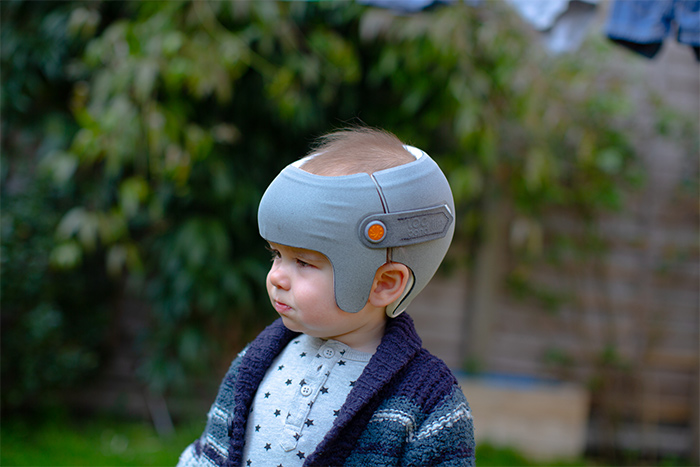
Above: Jack wearing his new 3D printed LOCband-Lite
Rosie’s very severe plagiocephaly went from 16mm asymmetry to 2mm in just six months after wearing the LOCBand Lite.
Read Rosie's plagiocephaly treatment journey
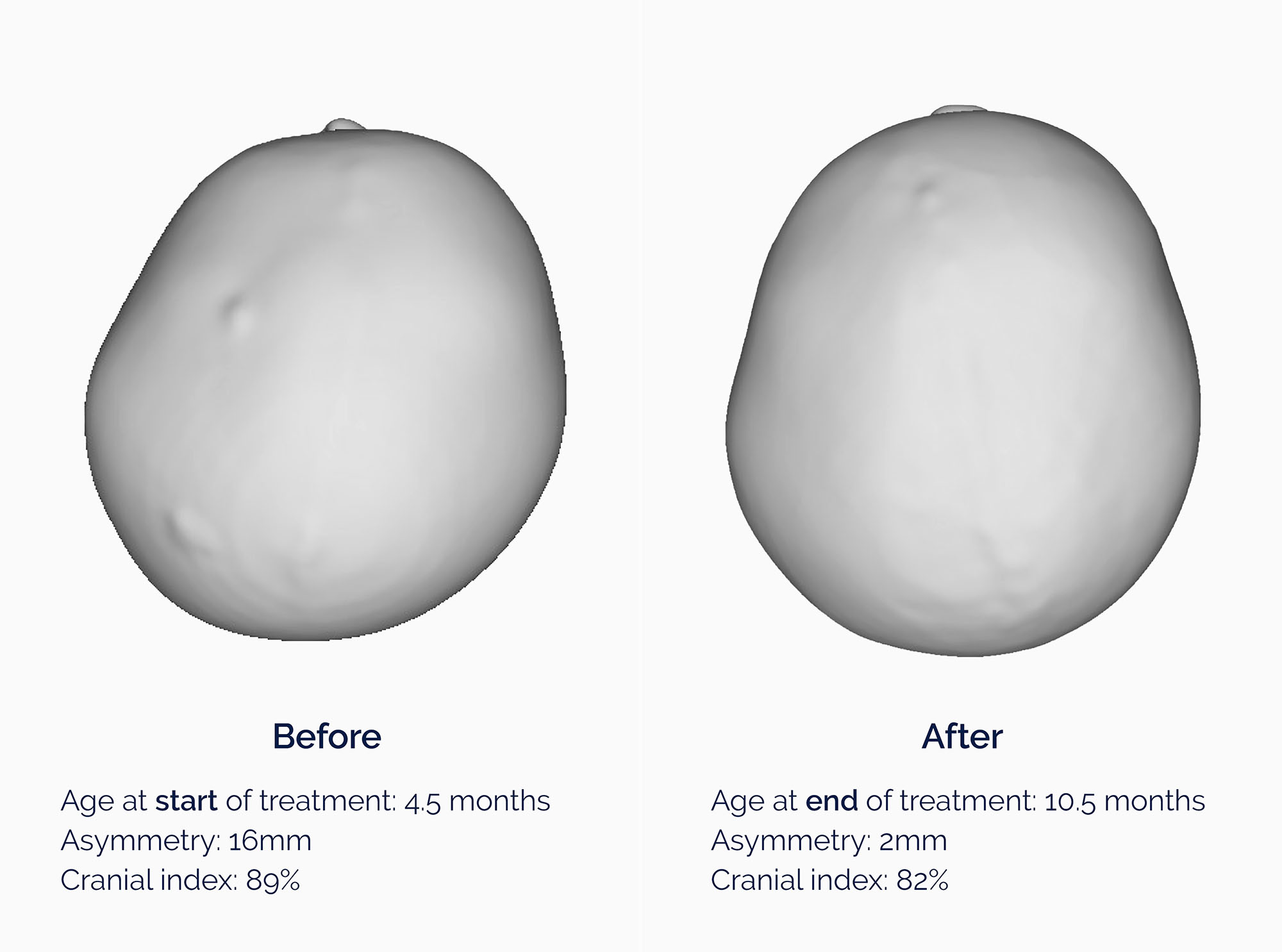
Ada first came to us with severe brachycephaly, causing a flattening of the head on both sides, creating a wider than normal head shape. At discharge, Ada’s cephalic index was 91% compared to 104% pre-treatment.
Read Ada's full flat head syndrome story
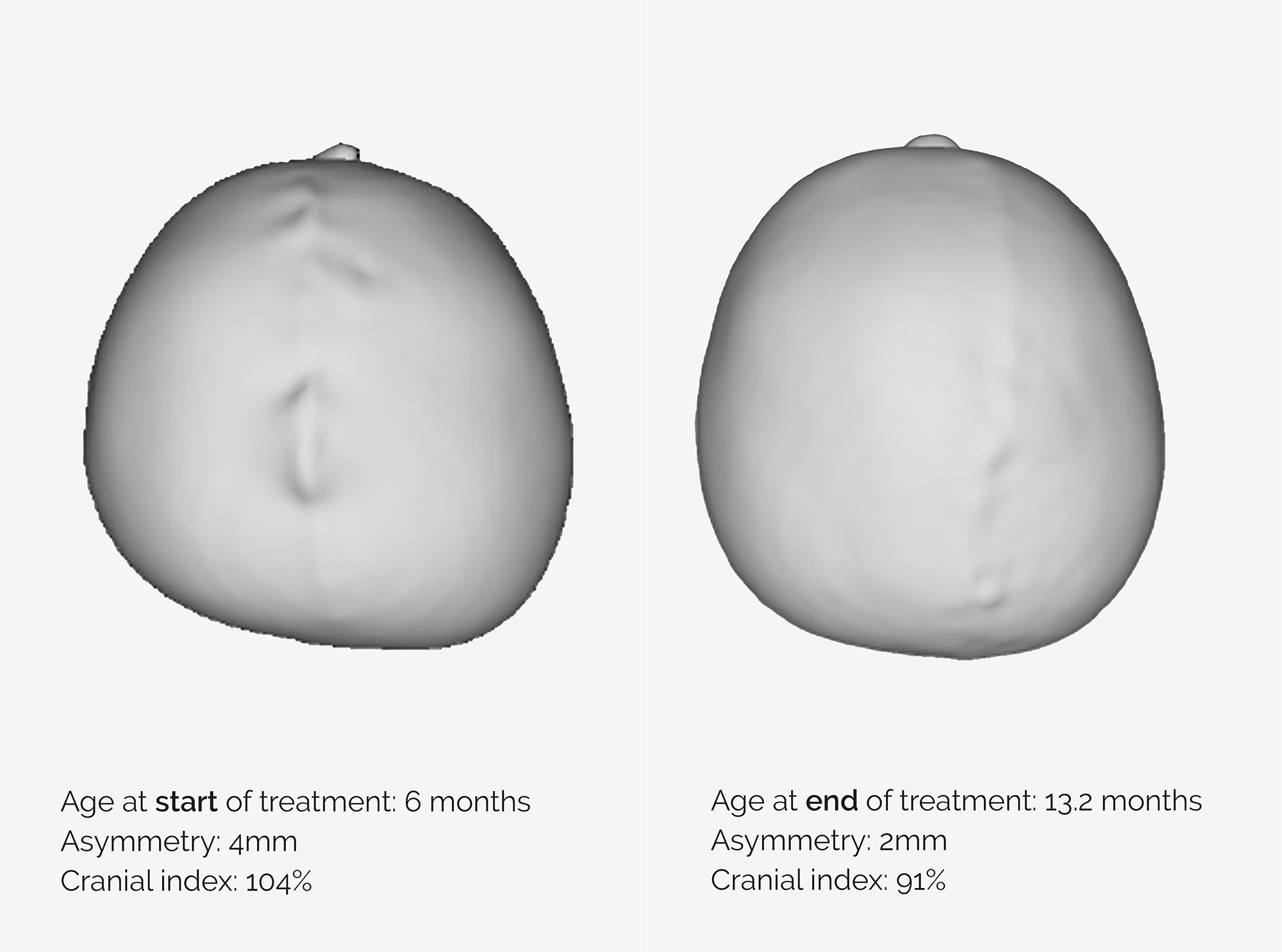
Billy was our 500th LOCband Lite patient. In just six months, Billy's asymmetry reduced significantly, going from an initial measurement of 20 mm (which would be classed as very severe) to 7 mm.
Read Billy's plagiocephaly treatment story
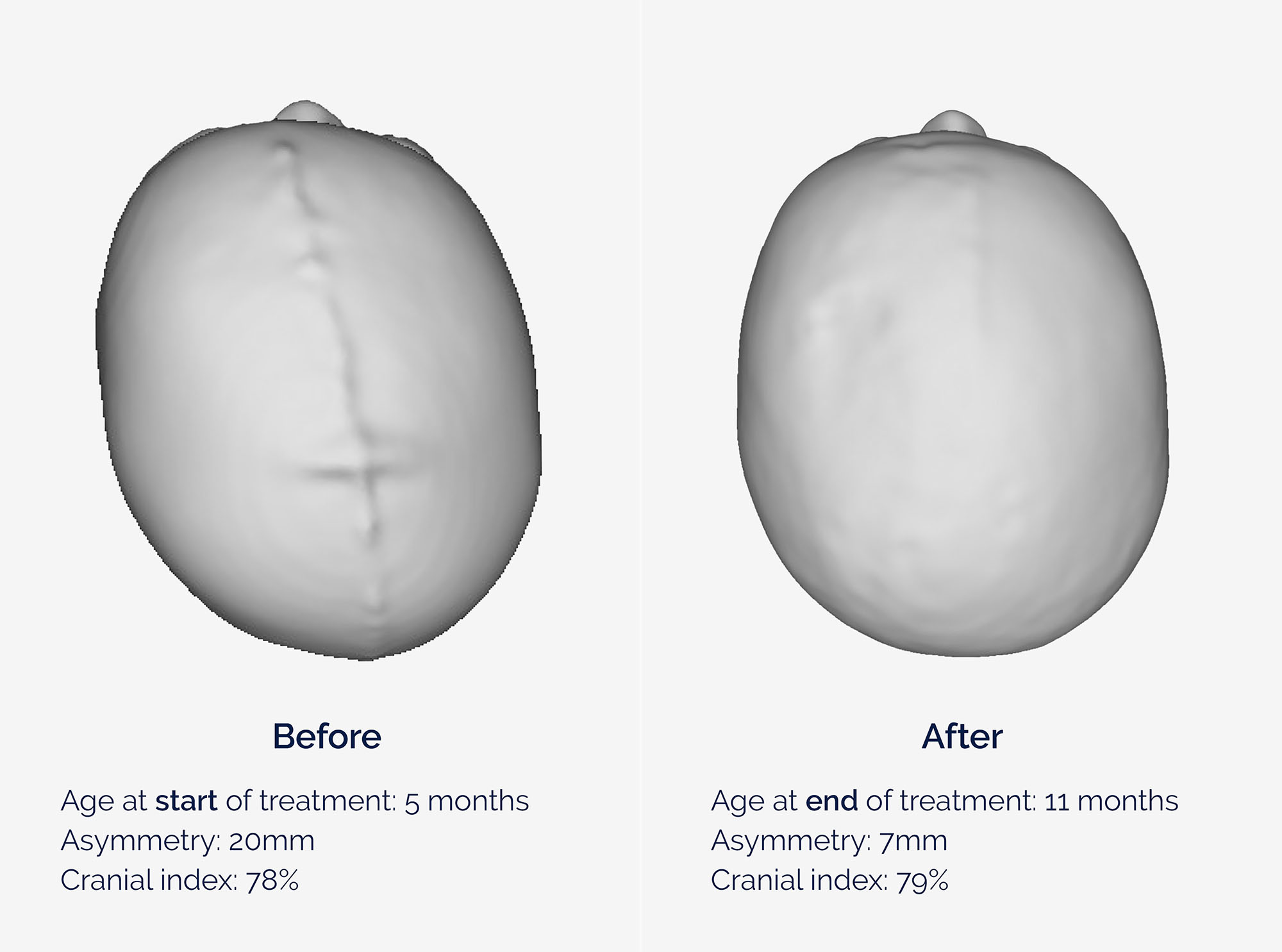
Iyad’s severe plagiocephaly was treated in just 3 months with the LOCband Lite. Iyad's head scans before treatment show an asymmetry value of 20mm. On discharge, his asymmetry had been reduced to 5mm. Not only was this a reduction in asymmetry of 75% but a much more normalised head shape.
Read Iyad's flat head syndrome treatment journey
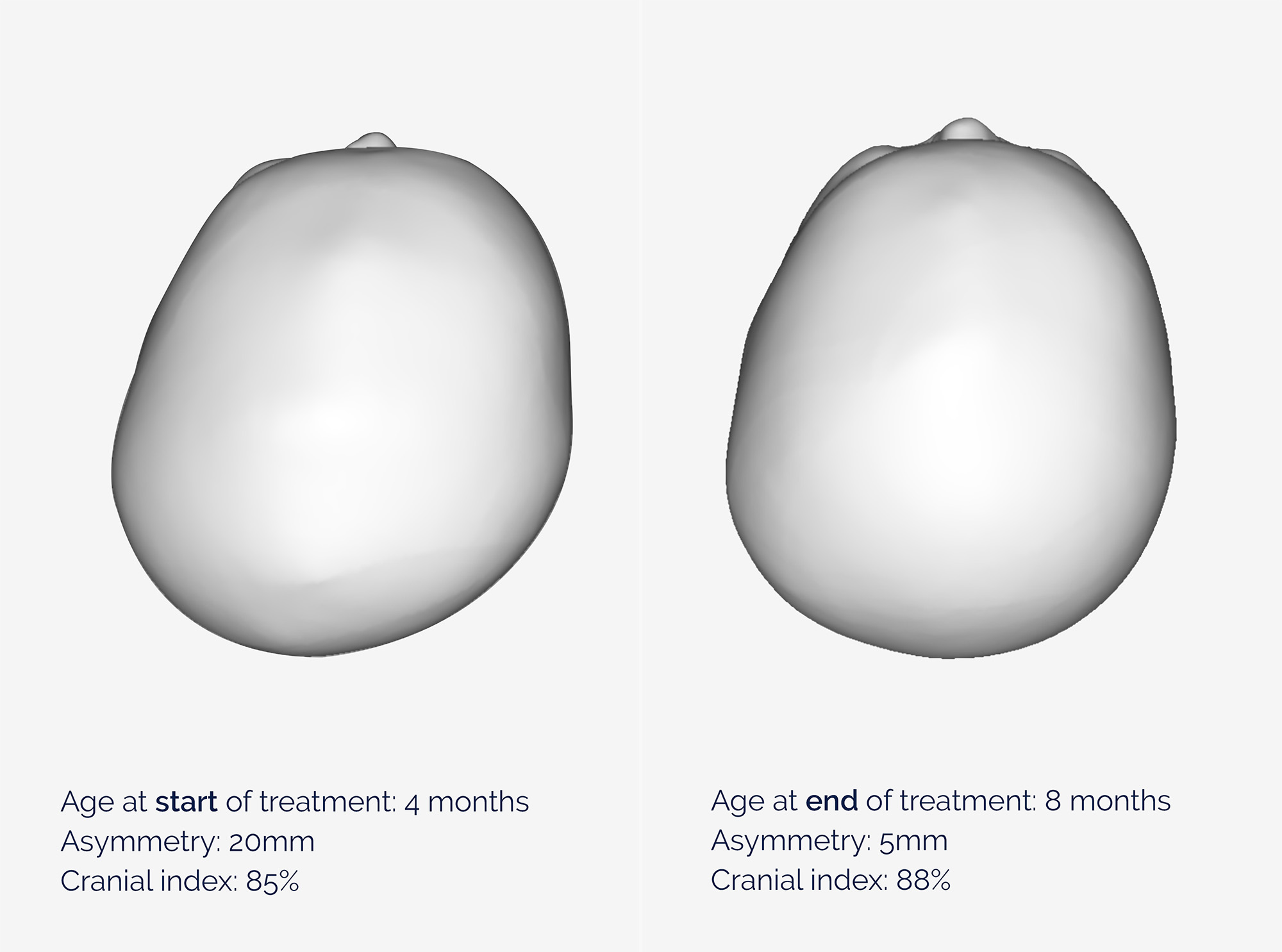
At the assessment, Bonnie was found to have severe right-sided plagiocephaly and moderately severe brachycephaly. After six months of treatment, Bonnie was discharged with her cephalic ratio down from 93% to 87% and her asymmetry down from 12mm to 4mm, which is considered a normal head shape.
Read Bonnie's plagiocephaly treatment story
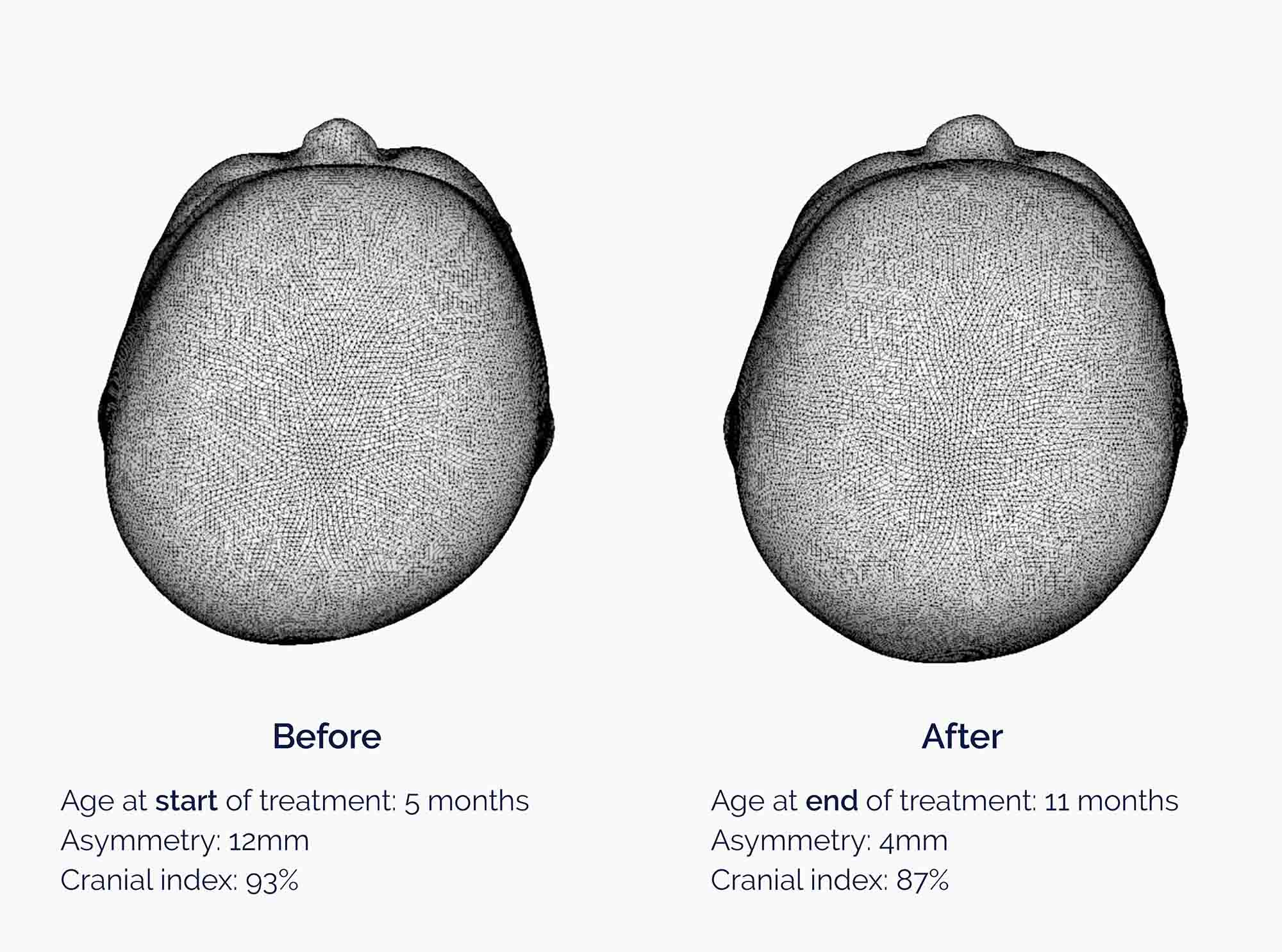
At just over a year old, Amelia is one of the older babies we have successfully treated for plagiocephaly using the LOCband Lite helmet. Amelia’s mother describes her flat head syndrome journey and the results of her treatment.
Read Amelia''s full plagiocephaly treatment story

Magnus came to LOC at the age of 5 months with severe plagiocephaly and an asymmetry reading of 16mm. Three months later, his asymmetry had gone down to 6mm.
Read Magnus's full flat head syndrome treatment story

Baby Amrit came to our Kingston clinic at the age of five months, with flat spots and 12mm asymmetry. His journey lasted four and a half months and he achieved a reduced asymmetry of 3mm.
Read Amrit's flat head syndrome treatment story
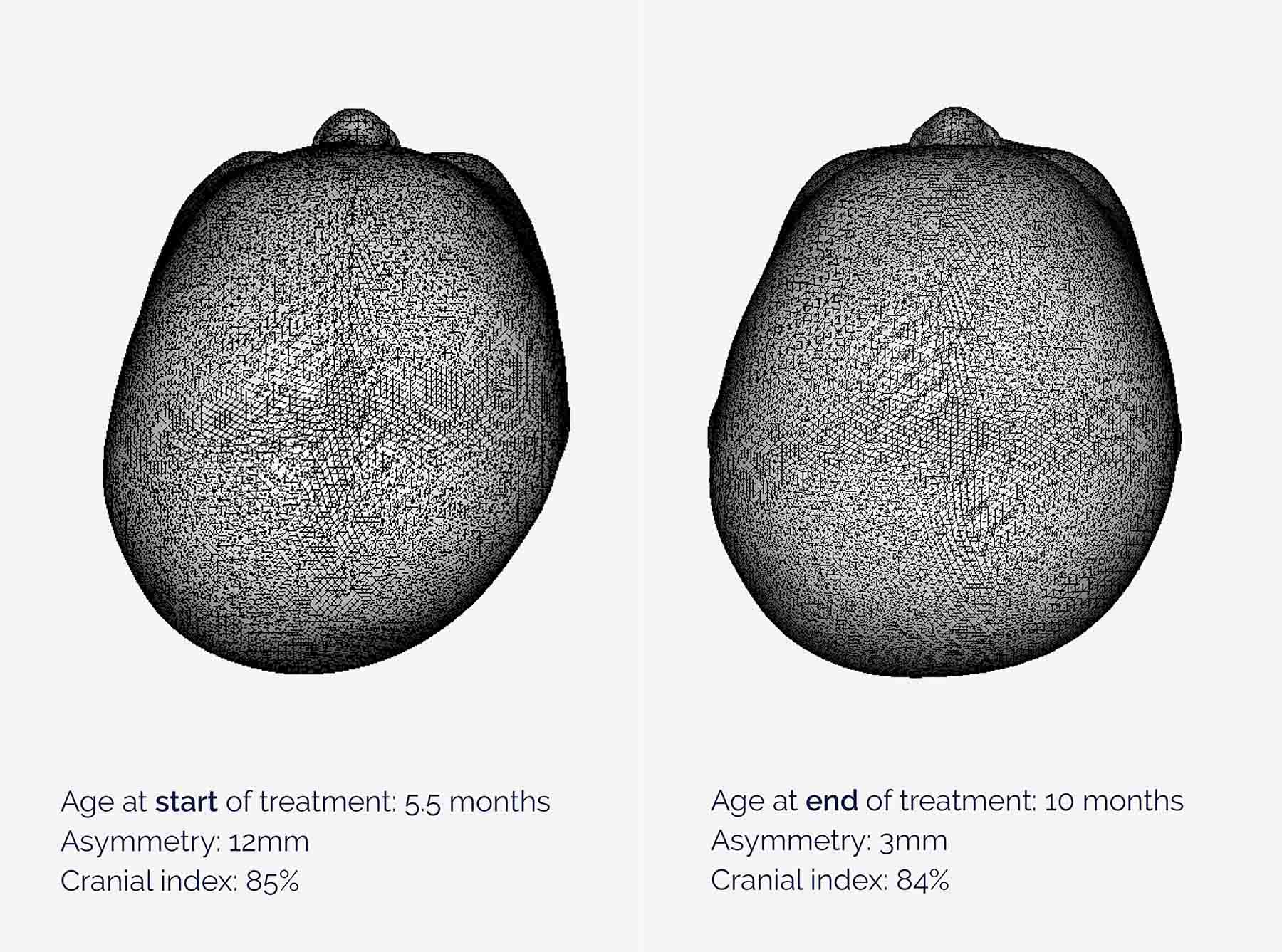
Helmet therapy helped reduce Ewan’s plagiocephaly from 17mm asymmetry to 5mm. A “huge difference” says mother Natalie, that would not have been possible by relying on repositioning alone.
Read Ewan's full plagiocephaly treatment story
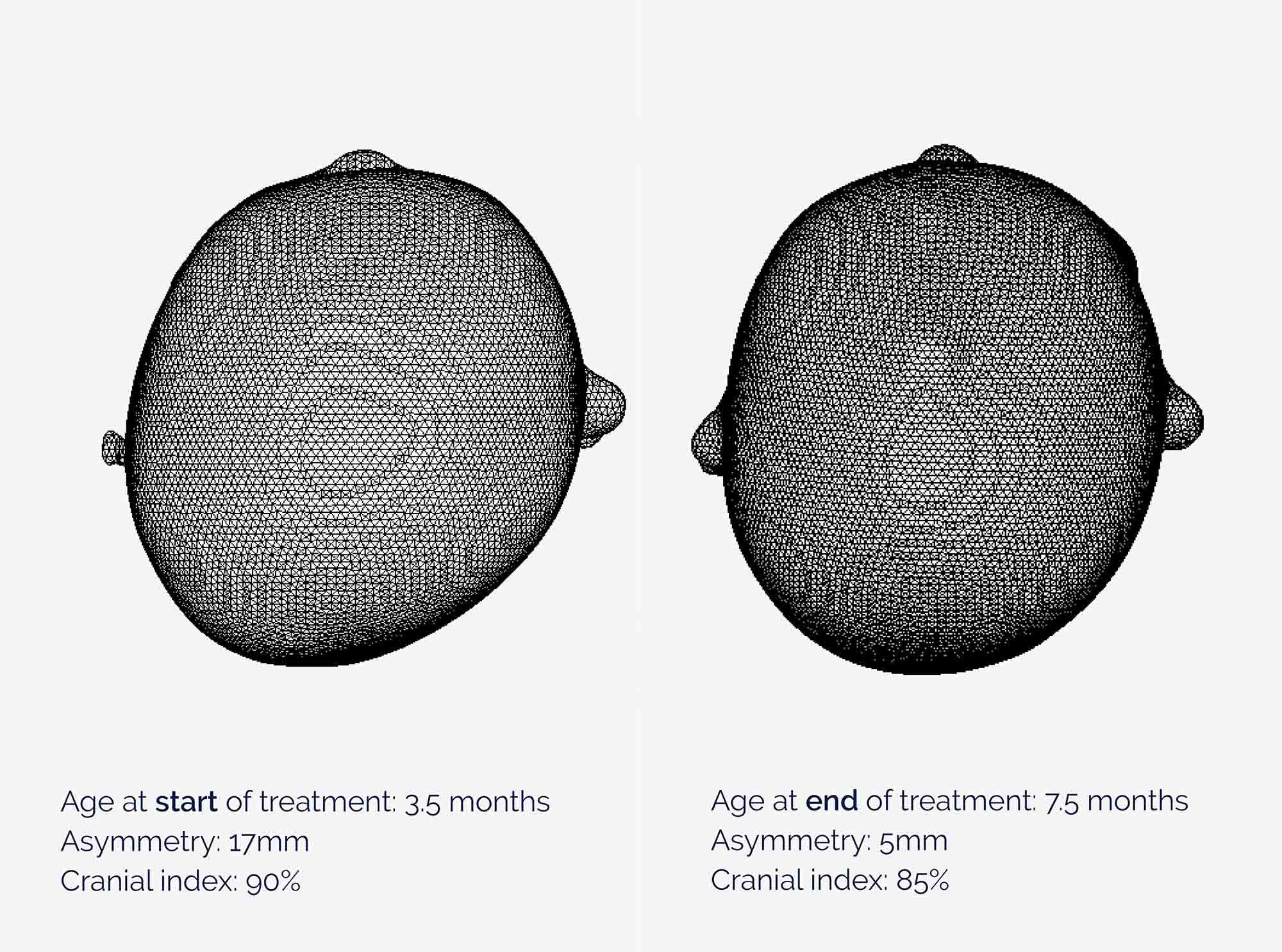
This is very much dependent on how fast your baby is growing. The faster the growth, the more frequently your baby will be seen so that the helmet can be adjusted. In general, reviews will happen at two to four-week intervals.
The price of treatment covers:
Yes - All babies that have completed their course of treatment with us have achieved a measurable improvement in head shape. However, you don’t have to take our word for it.
Recent independent research conducted by a University Hospital in Germany has endorsed the treatment for babies with moderate or severe plagiocephaly.
A larger, retrospective study has just been published that found complete correction was achieved in 94.4% of babies treated with helmet therapy.
The results were conclusive: repositioning achieved acceptable correction in 77.1% of cases, but 15.8% were moved onto helmet therapy because re-positioning was not working. Meanwhile, 94.4% of the infants who started in the helmet-treated group achieved full correction, as did 96.1% of those who were transferred from the repositioning group into the helmet-treated group.
Further information can be found on our Plagiocephaly Research page.
If your baby has a temperature or a fever due to illness you must remove the band. The band can be put back on once the temperature has returned to normal.
The optimum age for treatment is between four and seven months.
This is because the skull is most malleable at this age and improvements to head shape tend to take less time and are more dramatic. That is not to say that helmet therapy should be ruled out if the baby is older than seven months. Routinely, babies up to the age of 16 months can be treated very successfully.
The cut off age is around 18 months when the fontanelles (soft spots on the head) are no longer malleable. As babies grow and develop at different rates, it is always worth checking if you are not sure. There have been cases where a baby’s fontanelles have not fused yet by the age of 18 months, who have achieved successful, but less-marked results with cranial remoulding therapy.
Torticollis is a condition in which a tight or shortened muscle in one side of the neck causes the head to tilt or turn to one side, resulting in the infant resting its head in the same position. In 2013, we analysed the data from all first appointments in our Kingston clinic and found that 20% of the babies examined had some kind of neck condition that was causing head immobility.
The clinics and clinicians that provide this treatment in the UK will have received similar training and experience. However, we are the only clinic that manufactures its own helmet and our clinicians are closely involved with the process for each individual helmet that we produce.
In addition, we do not restrict review appointments to a set number, we are extremely flexible and respond to individual parents' needs so that the best outcome can be achieved for each baby.
The LOCband is non-invasive and works by applying gentle, constant pressure over the areas of the baby’s skull that are most prominent while allowing unrestricted growth over the flattened areas. The band consists of a soft foam layer inside a thermoplastic shell. As the baby grows, the band will be adjusted frequently to gently guide the skull into a more symmetrical shape.